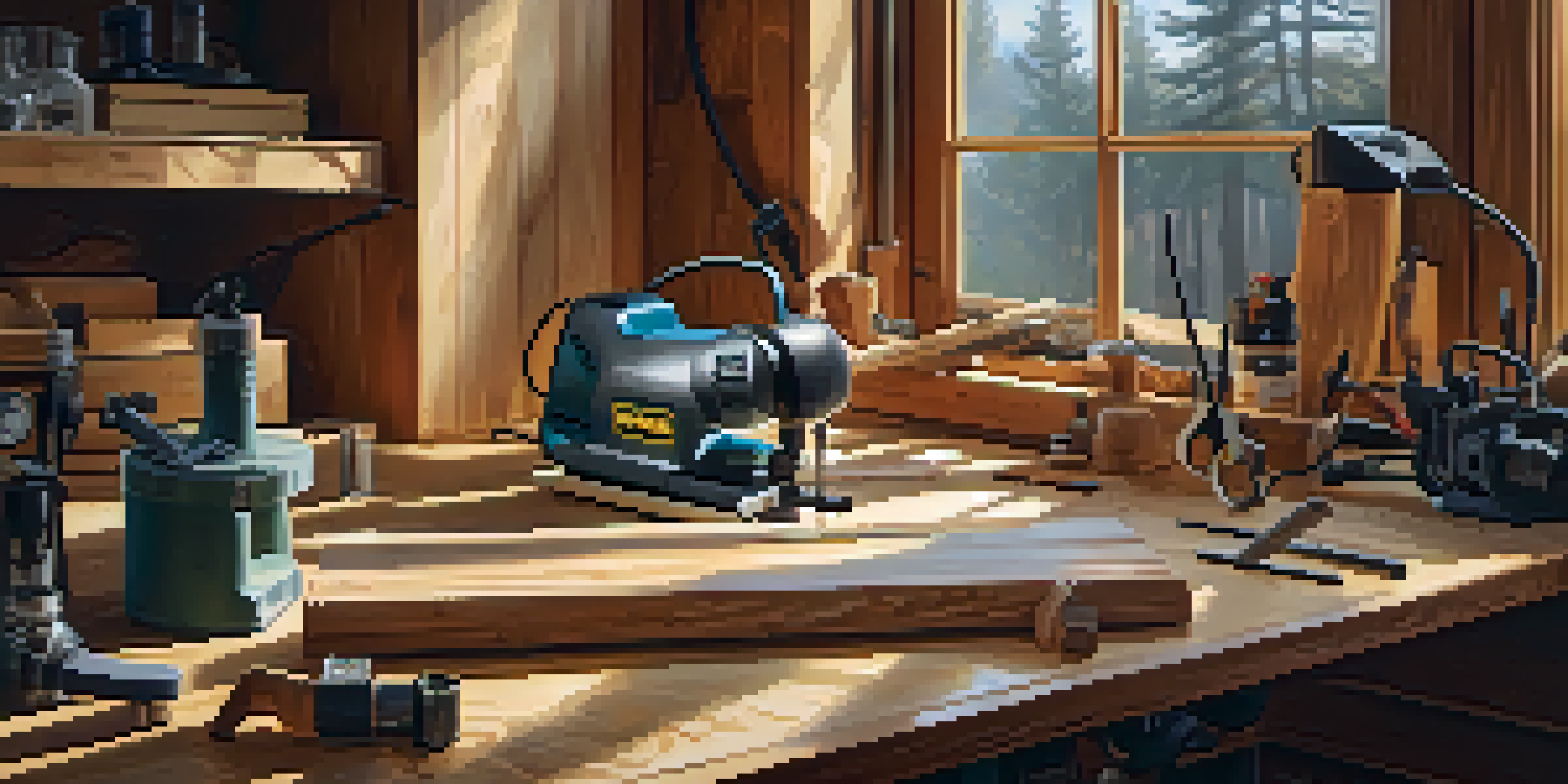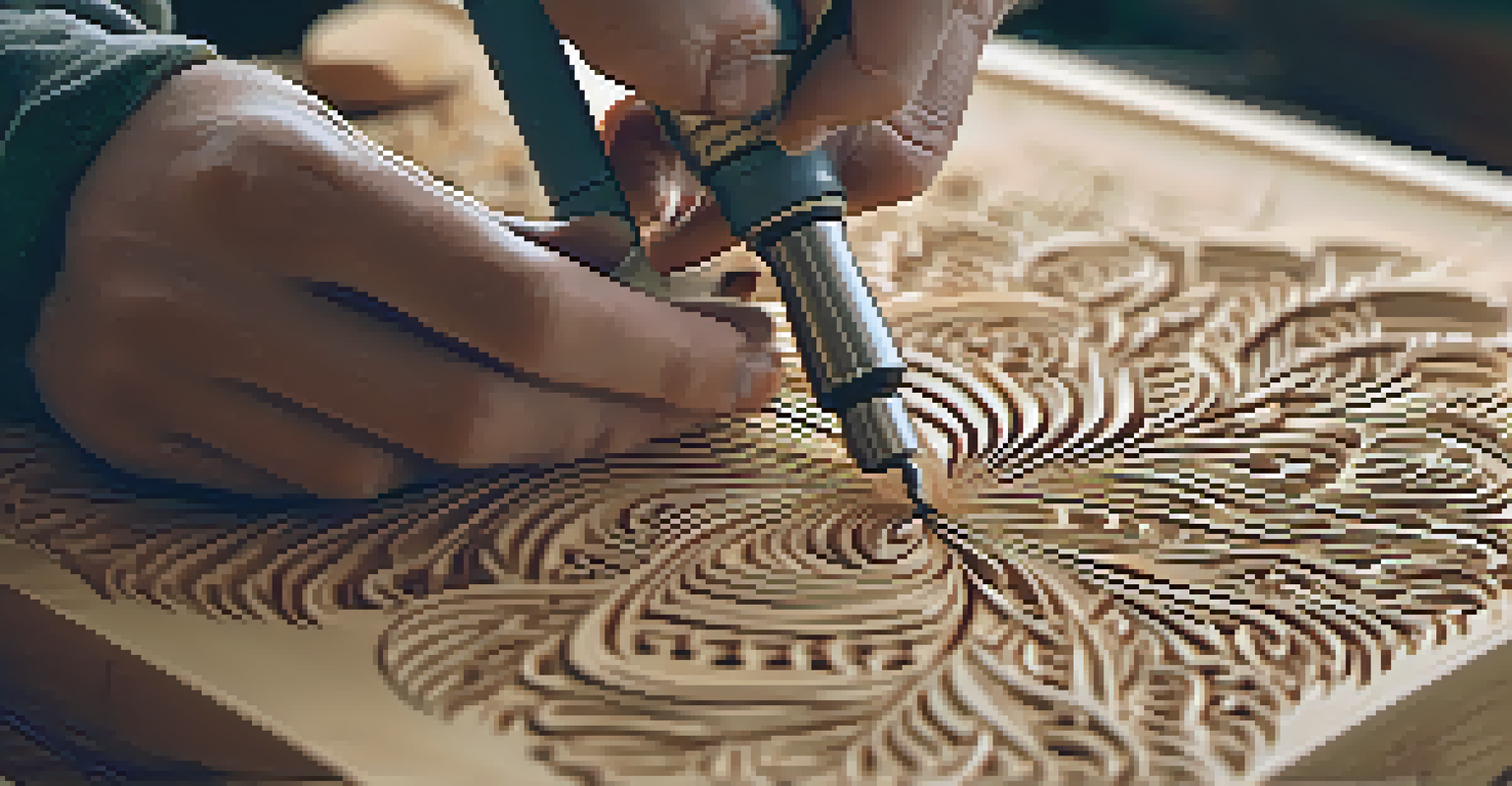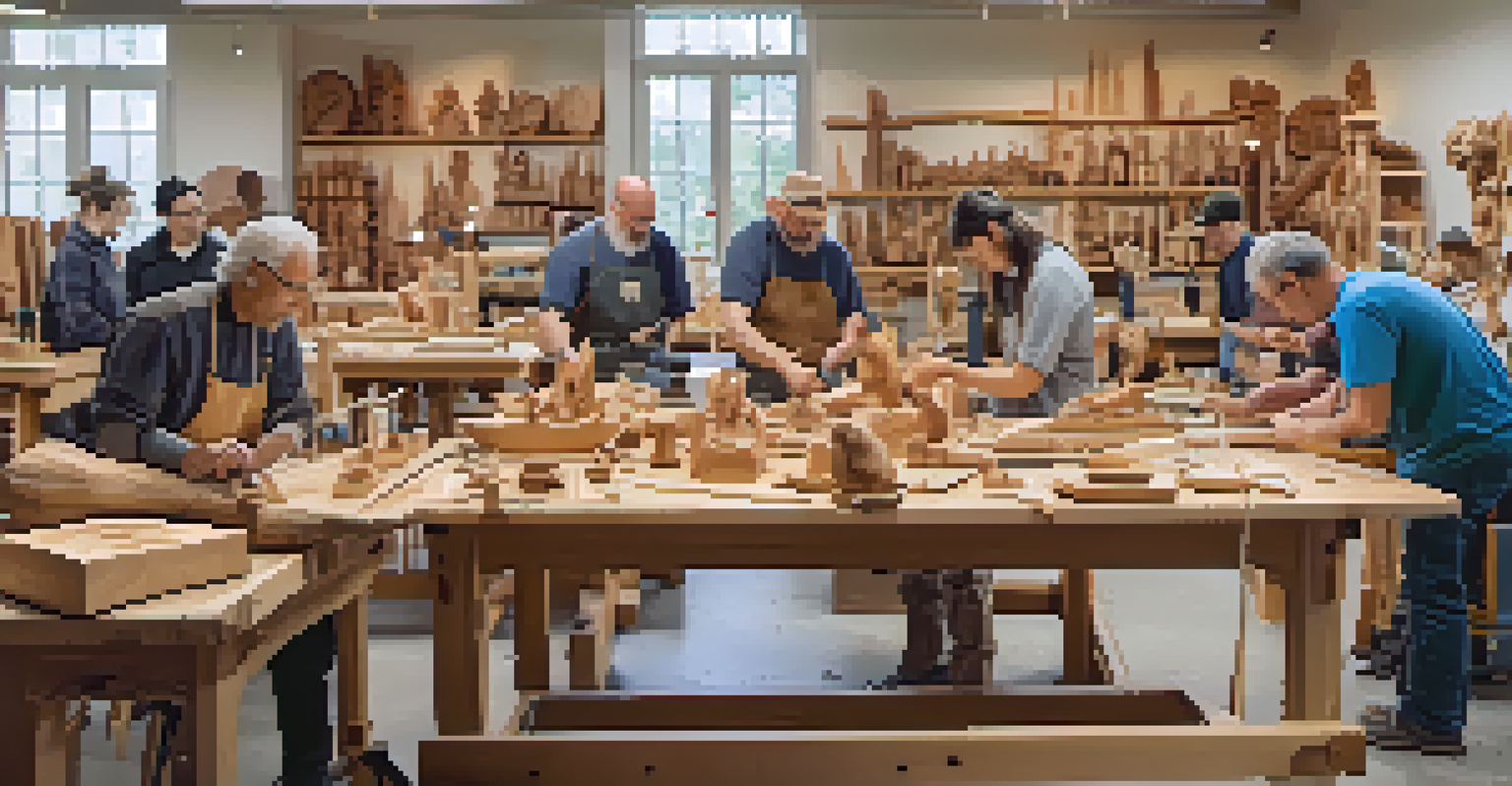Power Tools for Beginners: Starting Your Carving Journey

Understanding the Basics of Power Tools for Carving
Before diving into the world of carving, it's crucial to understand what power tools are and how they can enhance your craft. Power tools are electrically or battery-operated tools that make tasks easier and more efficient. In the realm of carving, these tools can help you achieve precision and intricate designs that hand tools might struggle with.
The difference between a good carpenter and a great carpenter is the tools they use.
For beginners, familiarizing yourself with the basic types of power tools is essential. Common tools include rotary tools, jigsaws, and engravers. Each of these tools serves a different purpose, and knowing what each one does will set you on the right path.
As you start your carving journey, remember that the right tools can significantly impact your experience. Choosing the correct power tool not only makes the carving process smoother but also enhances your creativity and productivity.
Essential Power Tools for Beginners in Carving
When starting your carving adventure, there are a few essential power tools to consider. One of the most versatile is the rotary tool, which can be used for everything from sanding to engraving. Its various attachments allow for a wide range of applications, making it a great investment for beginners.

Another important tool is the jigsaw, which is perfect for making intricate cuts in wood and other materials. It's user-friendly and can help you bring your creative designs to life with ease. If you're looking to make more detailed carvings, a wood router can also be invaluable.
Essential Tools for Carving Success
Familiarize yourself with key power tools like rotary tools, jigsaws, and wood routers to enhance your carving experience.
Finally, don't overlook the importance of safety gear. While power tools are fantastic for carving, they also require safety precautions. Always wear protective eyewear and a dust mask to keep yourself safe as you embark on this exciting journey.
Safety First: Tips for Using Power Tools
Safety should always be your top priority when using power tools. Start by reading the user manual for each tool, as it contains essential safety information. Understanding how your tools work will help prevent accidents and injuries.
Safety isn't just a slogan, it's a way of life.
Make sure to wear appropriate personal protective equipment (PPE), such as goggles, gloves, and ear protection. Power tools can create dust and noise, so taking these precautions ensures a safer work environment. Remember, it's better to be safe than sorry!
Additionally, always keep your workspace tidy and free of distractions. A clean area reduces the risk of accidents, allowing you to focus on your carving. By following these safety tips, you can enjoy your carving journey without unnecessary risks.
Choosing the Right Materials for Your Carving Projects
Selecting the right materials is just as important as choosing the right tools. For beginners, softwoods like pine or basswood are excellent choices due to their ease of carving. These woods are less dense, allowing you to practice your skills without too much resistance.
As you gain confidence, you can explore harder woods like oak or maple for more challenging projects. These materials require more effort but can yield stunning results. It's all about finding the right balance between challenge and enjoyment.
Prioritize Safety While Carving
Always wear protective gear and maintain a tidy workspace to ensure a safe carving environment.
Don't forget to consider other materials like foam or soft plastics, especially if you're experimenting with designs. They can be forgiving and allow you to practice techniques without the commitment of wood. Embrace the variety of materials available to expand your creative possibilities.
Basic Techniques for Carving with Power Tools
Once you have your tools and materials, it's time to delve into basic carving techniques. Start with simple shapes and gradually work your way up to more intricate designs. Practicing basic cuts will help you gain confidence and control over your tools.
A common technique is to use the rotary tool for detailed work. You can practice creating textures or patterns on the surface of your material. As you perfect these skills, you'll find that your carvings become more refined and visually appealing.
Don’t be afraid to experiment! Carving is an art, and like any artist, you’ll develop your unique style over time. Allow yourself the freedom to try new techniques and approaches as you grow in your carving journey.
Maintaining Your Power Tools for Longevity
To ensure your power tools remain in good condition, regular maintenance is essential. Start by cleaning your tools after each use, as dust and debris can accumulate and affect performance. A simple brush or cloth can do wonders in keeping your tools clean.
Check the blades and bits for wear and tear. Dull tools not only make carving harder but can also lead to accidents. Replacing blades and bits as needed will keep your tools sharp and ready for action.
Join Communities for Growth
Engaging with carving communities provides support, inspiration, and opportunities to learn from others.
Lastly, store your tools properly when not in use. A dedicated toolbox or storage area protects them from damage and keeps them organized. By taking care of your tools, you'll extend their lifespan and enhance your carving experience.
Joining a Community for Support and Inspiration
As a beginner, joining a carving community can significantly enhance your journey. Whether online or in-person, these communities provide valuable support and inspiration. You can share your projects, ask questions, and learn from others' experiences.
Participating in workshops or local carving clubs can also expose you to new techniques and ideas. Networking with fellow carvers helps you grow and develop your skills while building friendships along the way. Plus, you can often find mentors willing to share their expertise.

Don't underestimate the power of social media either! Platforms like Instagram and Pinterest can be great sources of inspiration. Following experienced carvers can spark new ideas and motivate you to continue honing your craft.